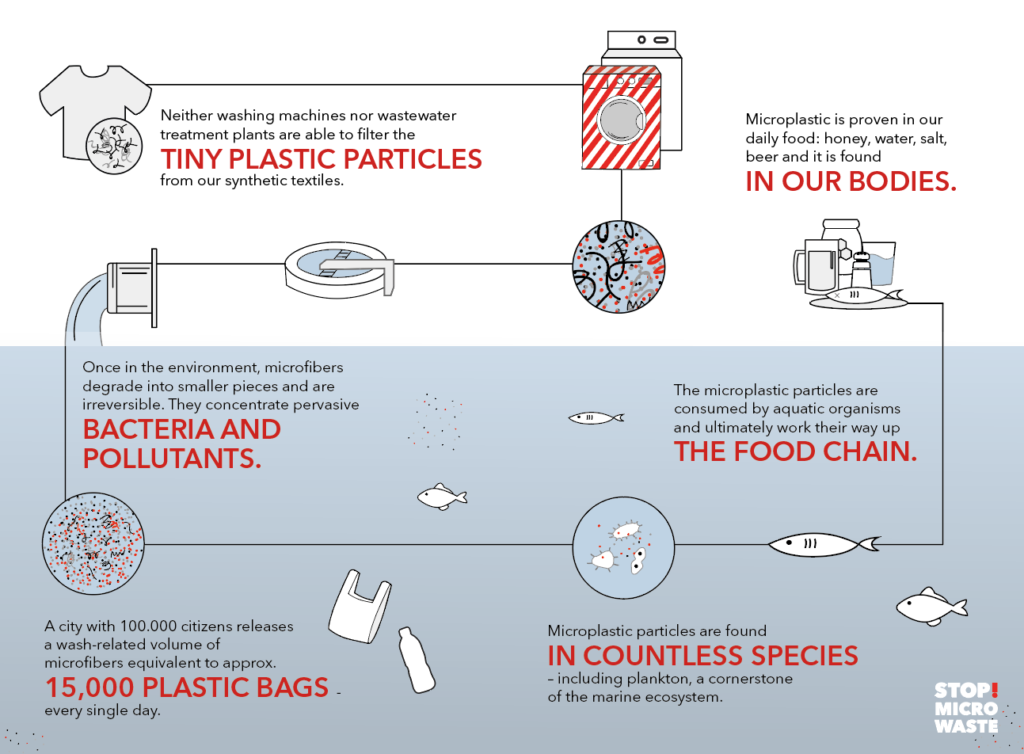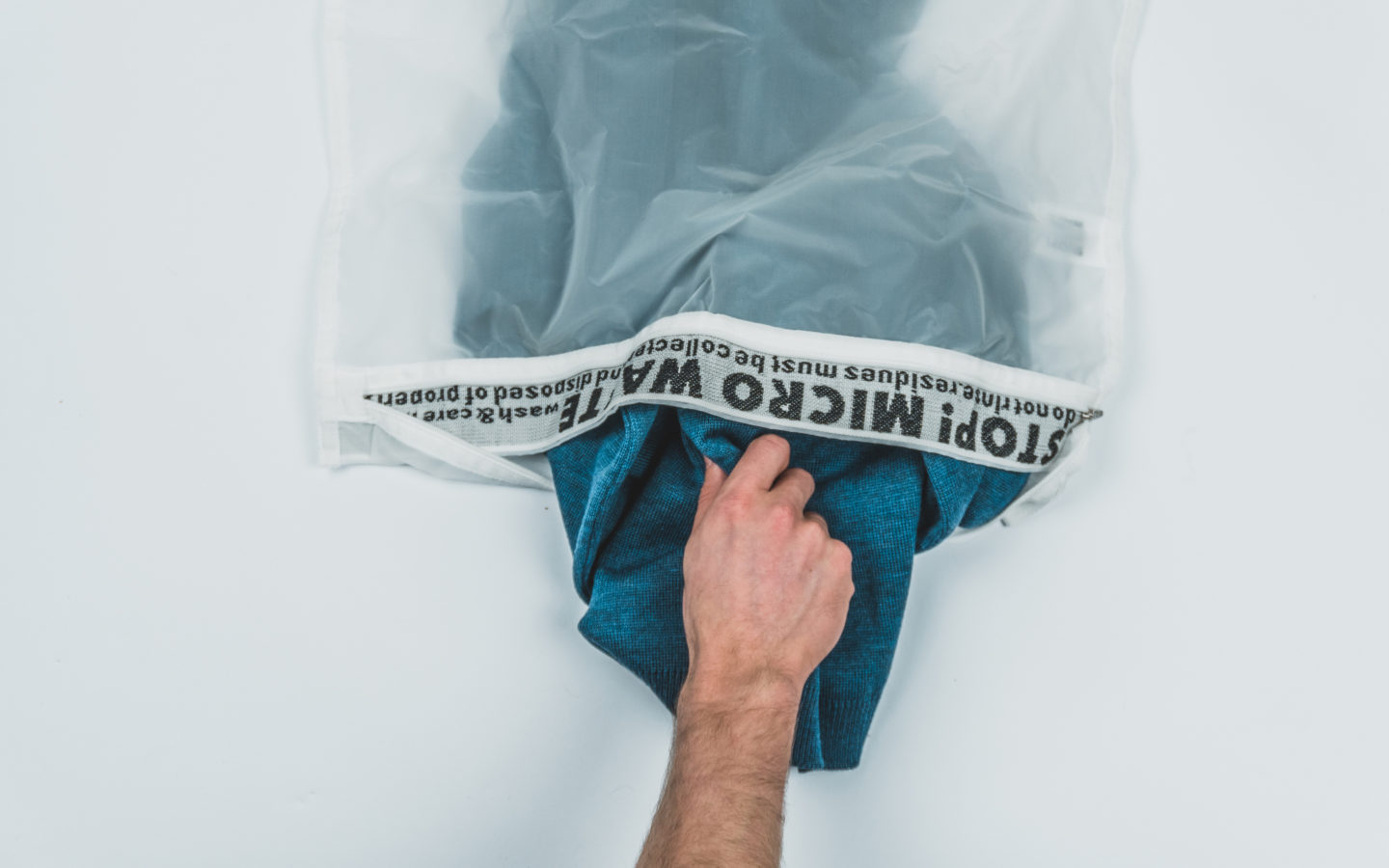We’ve all seen the images. Tragic, heartrending photos of sea birds and fish, whales and turtles affected by plastic pollution. The ocean is polluted by approximately 8 million metric tons of plastic debris every year – and it’s in the images that make their rounds across social media that we see the effects.
But plastic pollution isn’t relegated to the few shocking images we see year over year – plastic pollution is a global threat responsible for wiping out hundreds of thousands of marine animals every single year. But it’s not just the plastic you can see that’s the problem. While general plastic pollution is rampant, it’s the stuff you can’t see – the plastic fragments, microbeads and synthetic fibers – that poses an even greater threat based on sheer numbers alone. This is called microplastic, and it’s in just about every liter of water in the ocean. In fact, in a study conducted by the Shaw Institute in Blue Hill, Maine, every sample of seawater taken off the Gulf of Maine hosted at least 17 nearly-invisible plastic fragments. It was even found in the tissues of mussels, oysters and corals.

More and more, studies like this one are revealing the toll our plastic consumption is taking on the world around us – and how that usage, in turn, affects us (if we’re eating those mussels and oysters, we’re also eating the plastic). In many ways it feels like an uphill battle: we consciously cut back on single-use plastics, only to learn that recycling isn’t sustainable, we make sustainable shopping choices, only to learn that our soap contains microbeads or a chemical that harms fish. It’s overwhelming and enough to make the most Earth-loving consumer want to throw in the organic, unbleached towel. But as these studies come to light, as we work to curb our habits and educate ourselves on the effects they have on the environment, there are those among us working to create change and build awareness, like the folks behind the Guppyfriend washing bag.
What are microplastics and where do they come from?
Before we dive into the ethos of Guppyfriend, let’s talk about plastic. Just what are microplastics and where do they come from? Microplastics are the microscopic fibers, shards and beads composed of plastic that we usually aren’t able to see. Think: the fuzz from the synthetic fleece you wear hiking, or a polyester thread from your favorite yoga pants. Or a crushed plastic coffee cup or the scrubbing beads that make your toothpaste feel like it’s working (yes, even those). These seemingly insignificant, tiny little shreds of things all wash down the drain, and they’re all too small for wastewater treatment plants to process. What does this mean? It means these plastics eventually make their way into our waterways. It may not sound like much – what’s a few threads? But consider this: According to Guppyfriend, “a city the size of Berlin releases a wash-related volume of microfibers equivalent to 500,000 plastic bags every single day.” All those very tiny, seemingly insignificant things add up – fast.

Why are microplastics bad?
So what’s the big deal? Going back to those shocking photos of seabirds and marine life: that’s where the plastic ends up. In stomachs and lodged onto beaks. These microplastics are unavoidable for animals, who scoop it up while feeding, get tangled in it, and wrapped up. Microplastics are even found in plankton, a foundation of the ecosystem – along with 1,200 other species (so far). And some of those species end up on our dinner plates. Not into the idea of eating plastic? Imagine how the salmon feels. Microplastics are an irreversible problem, but with knowledge comes power, and there are steps that can be taken to help prevent further plastic pollution.

How can we prevent microplastics?
Besides cutting back on the synthetic fibers in your life, saying no to single-use plastics, and reading labels to ensure our favorite products don’t contain synthetic microbeads, taking the steps to properly filter out and dispose of the microplastics we do produce can be a big step towards lessening our impact. One game-changing way to do this is with the Guppyfriend – a washing bag created with the purpose of catching the synthetic fibers and plastics created by your laundry before they end up in the water.
How does Guppyfriend work? Large enough to fit most of your synthetics (like a week’s worth of workout clothes), you simply separate clothes by color and place your dirty laundry in the bag, and toss the bag into the washing machine and wash as normal. When your wash cycle is done, unzip the bag, remove your laundry for the dryer (or be extra eco-friendly and hang-dry), and then remove the little balls of lint collected in the seams of the bag – hello micro waste! This waste can be tossed in the garbage. Yup – the garbage.

One other big advantage to using Guppyfriend? It protects the textiles and makes your clothing more long-lasting since 86% of the synthetic fibers (on average) don’t break in the first place.
While the Guppyfriend is a great step towards creating change and plastic prevention, it’s not the be-all, end-all solution for ending the problem of microplastic waste. That solution starts and ends with US. As Guppyfriend says, “Our overconsumption needs to change radically, and new materials, manufacturing techniques, clean washing machines and more effective sewage treatment plants need to be developed.”
For now, get your own Guppyfriend and start making changes of your own.
Do you use a Guppyfriend? Share your experience with us on social by tagging @AvocadoMattress and #AvocadoGreenMagazine!

Shop Pillows
The Essential Organic Pillow Collection
Gentle, breathable, non-toxic support.





